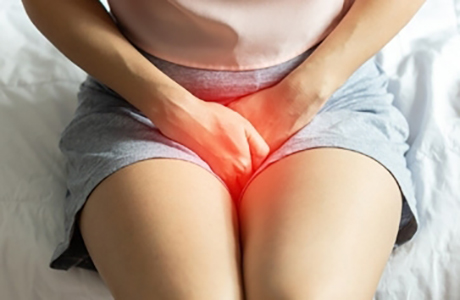
Laser applications for the treatment of lichen sclerosus, a widespread skin disease, have become very common in recent years. Tissue regeneration can be achieved with lichen sclerosus treatment with laser, the dose, and duration of use of cortisone-containing creams can be reduced, and serious reductions in complaints of lichen disease can be achieved.
Lichen sclerosus treatment with laser is a new treatment method with very successful results in certain patients. Lichen disease involving the external genitalia is also known as “vulvar lichen sclerosus”.
Laser devices work with the principle of transferring high-energy light beams into the tissue and generating heat energy as a result. The thermal energy causes a slight and controlled injury in the tissue, and as a result, 'fibroblasts' migrate to the region, initiate collagen synthesis, and start to renew the region. This tissue regeneration feature of the laser is also used for the symptomatic treatment of lichen disease.
Lichen sclerosus is a chronic, benign, inflammatory skin disease that can frequently involve the genital area, causes thinning of the skin and many related symptoms, and is thought to be autoimmune. It mainly involves the genital area and causes complaints such as itching, burning, and stinging. In some cases, involvements outside the genital area occur.
It can affect the area between the vagina and anus ('perineum'),inner genital lips, outer genital lips, the area over the clitoris, and around the anus in the genital area.
Intravaginal involvement is extremely rare. It also disrupts the anatomy of the vulva with adhesions in the external genital area. It can also cause pain during sexual intercourse (‘dyspareunia’),vaginal dryness, inability to orgasm, and even inability to have penetrative sexual intercourse.
Lichen sclerosus disease is also known by names such as "lichen disease", "lichen sclerosus atrophycus", or "lichen sclerosus disease".
The absolute incidence is unknown, and it is thought to occur in one out of every 59 women.
Although the exact cause is unknown, it is a multifactorial disease involving genetic, hormonal, autoimmune, and inflammatory factors.
The diagnosis is usually easily made by gynecologic examination. However, biopsy (pathological examination by taking tissue from the skin) is essential to confirm the diagnosis and to detect the absence of any carcinogenic transformation.
It can cause many complaints in the genital area. These are;
Especially in patients who are not treated, the vulvar architecture deteriorates progressively, the inner and outer lips become blurred and even disappear (resorption),the tissues can stick together, the clitoris becomes embedded, and the vaginal entrance narrows.
It is stated that the risk of “vulvar squamous cell carcinoma”, a type of skin cancer, is between 2-6% in lichen disease. For this reason, it is essential to take a biopsy before treatment and to follow the course with serial biopsies.
Potent cortisone drugs such as "clobetasol propionate" are given as a cream to treat lichen sclerosus and suppress the inflammatory process in the tissue; on the other hand, they increase the thinning of the skin with long-term use. Therefore, use for longer than two months should be avoided. It is generally recommended to reduce the dose to 2-3 per week after 6-8 weeks of daily use.
Fractional lasers can be used in the treatment of lichen sclerosus disease. Increasing the inflammation by re-igniting the inflamed skin tissue with laser and P*R*P can be compared to the logic of 'firefighters extinguishing the fire with fire'. The inflammatory process, which is slightly reignited at the beginning of the treatment, will be followed by a recovery period.
The patients taken to the gynecological examination table are scanned with laser light after regional anesthesia is performed. The entire process is completed in 2-3 minutes on average. The laser procedure is very reliable, the risk is almost non-existent, and it is painless.
No downtime needed, and after laser treatment, lichen patients can return to their normal lives immediately. Generally, it is recommended as 3-4 laser treatments every 2-3 months, depending on the response. This effect can be further increased in the same session with P*R*P injections prepared from the patient's own blood.
For the treatment of lichen sclerosus in our clinic, the following methods are applied according to the condition of the patient's tissue;
Nutritional habits are also important in lichen patients. For this reason, we also give special diets to our patients.
While a single treatment method is sufficient for lichen patients in certain cases, combined methods are preferred in most of the cases. Especially in recent years, lichen sclerosus treatments with the laser have been a new hope for the patients.